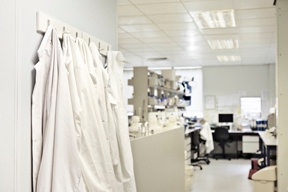 Recent accidents in industrial laboratories across the country have raised questions about lab safety programs, and whether enough is being done to instill stronger safety cultures. In particular, there are major concerns in these cultures in nonindustrial settings where serious incidents have taken place.
Recent accidents in industrial laboratories across the country have raised questions about lab safety programs, and whether enough is being done to instill stronger safety cultures. In particular, there are major concerns in these cultures in nonindustrial settings where serious incidents have taken place.
Leaders from the chemical industry published a letter in Chemical & Engineering News expressing their concerns with the “wide gulf in safety cultures,”[i] stating, ““The facts are unequivocal. Occupational Safety & Health Administration statistics demonstrate that researchers are 11 times more likely to get hurt in an academic lab than in an industrial lab. There have been serious accidents in academic labs in recent years—including fatalities—that could have been prevented with the proper use of protective equipment and safer laboratory procedures.”[ii]
Experts point to the unique and fluid nature of academic labs where the flow of “new and inexperienced researchers” produces significant turnover and a broad range of experience levels. The turnover and length of stay have a major impact on the labs’ ability to build and maintain a strong safety culture. A survey of more than 2,400 researchers completed by he University of California Center for Laboratory Safety, the Nature Publishing Group and BioRAFT, a developer of university laboratory management software, found that 80 percent of respondents worked alone in the lab at least weekly, a definite no-no in lab research. Only 46% of respondents said they wear a lab coat, although it is required at all times.
A Chemical Safety board from one institution published six lessons learned[iii] from a 2010 incident that resulted in a major explosion in the research lab:
- You must go beyond OSHA’s Laboratory Standard (29CFR 1910.1450) and ensure your safety management plan addresses all hazards, especially physical hazards and physical hazards of chemicals.
- Your institutional chemical hygiene plan and standard operating procedures must verify that all research-specific hazards are fully evaluated and mitigated.
- You must recognize the lack of current standards and guidance on hazard evaluation and mitigation and risk assessment addressing the unique issues in nonindustrial research labs. Most are specific to industrial settings and not fully transferrable to your environment.
- Written protocols and training specific to the research are absolutely necessary.
- Your institution’s organizational structure must ensure direct reporting from the safety inspector/auditor to an individual/office with “authority to implement safety improvements.”
- Previous incidents and near-misses must be documented, tracked, and communicated in order to provide education and improvement to safety programs.
The National Research Council (NRC) published Safe Science, a report that is considered a must read for lab managers. The report provided 15 findings, nine conclusions and nine recommendations. A June 2015 article on LabManager.com[iv] summarized the NRC’s nine recommendations to help increase safety in nonindustrial research labs:
- Leadership. Top management must actively demonstrate and show ongoing commitment that safety is a core value of the institution.
- Performance Linked. Promoting a strong, positive safety culture should be one of the criteria for promotions, tenure, and salary decisions.
- Resource Based. Identify and design research that can be done safely based on limited and constrained resources.
- Risk Management. Develop risk management plans with input from all stakeholders. Direct resources and establish policies to maximize a strong safety culture.
- Teamwork. Use support organizations (e.g., Environmental Health and Safety), teams, and groups to build a safety culture.
- Teamwork 2. Provide means and encourage collaboration between researchers, principal investigators, and EH&S personnel.
- Review. Establish and require incident and near-miss reporting. Document and centralize information. Communicate lessons learned.
- Evaluate. Establish and require research-specific hazard analyses.
- Training. Develop and implement initial, ongoing, and periodic training to ensure understanding of associated hazards and risks. Ensure the ability to use proper protective measures and mitigate potential harm.
Visit NAP.edu to download a free PDF of Safe Science.
[i] http://www.labmanager.com/lab-health-and-safety/2015/06/safer-science#.VbsV3Le8khq
[ii] “The Importance of Teaching Safety,” William F. Bandolzer, et al., Chemical & Engineering News. Vol. 91, Issue 18. May 6, 2013. http://cen.acs.org/articles/91/i18/Importance-Teaching-Safety.html
[iii] http://www.csb.gov/assets/1/19/csb_study_ttu_.pdf
[iv] http://www.labmanager.com/lab-health-and-safety/2015/06/safer-science#.VbsV3Le8khq
